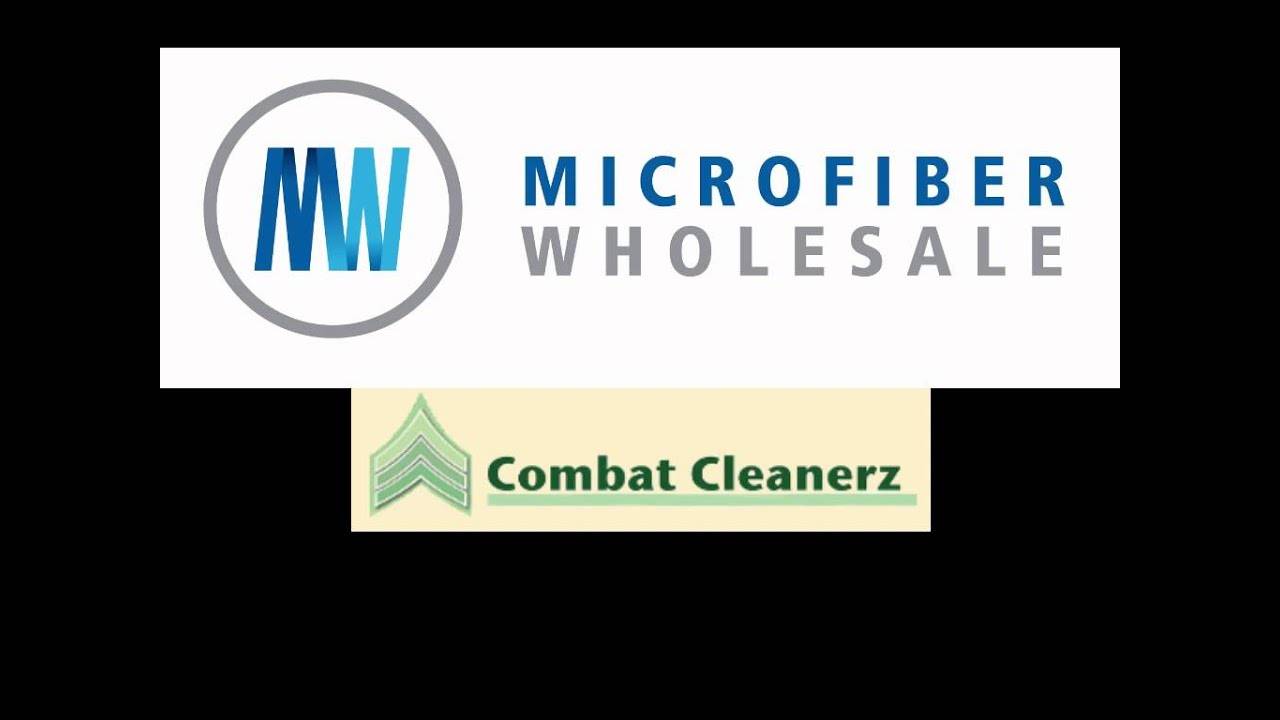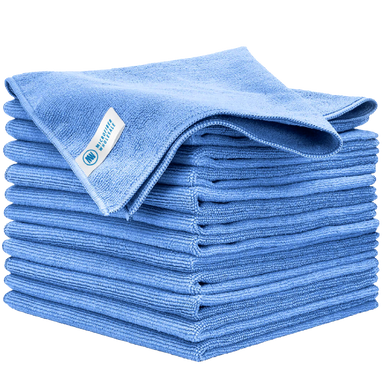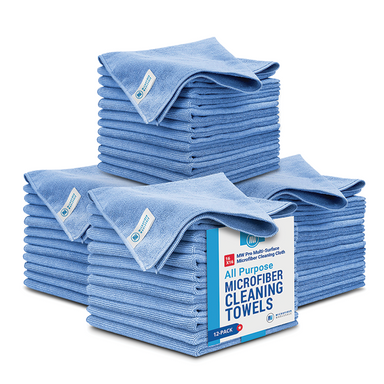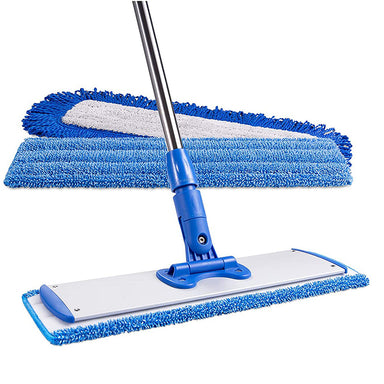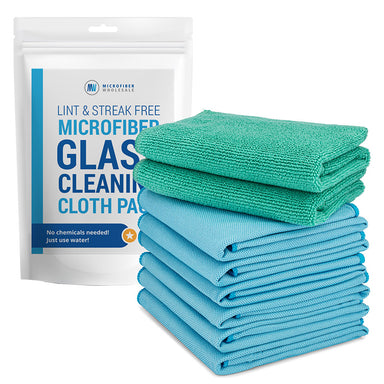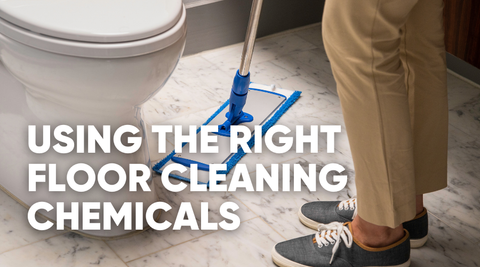Visit Combat Cleaners: Scranton Wilkes-Barre Commercial Cleaning
Listen to this Show and Learn:
- How Mike used being “the worst cleaner in the world” as an advantage to building a profitable cleaning company by prioritizing customer service.
- The ideal personality type and mindset for cleaning industry professionals.
- The roadmap to increasing your profitability by tag services to your cleaning company.
- The most important tools for a commercial cleaner
Mentions:
Microfiber Towels
Microfiber Flat Mop
Microfiber Laundering Instructions
Note: Mike mentions using cotton wet mops, especially in restrooms. We sent samples of our microfiber tube mop for Combat Cleanerz to try in place of the cotton mops and will report back after they’ve had a chance to use them.
Transcription:
[Welcome to the Microfiber Wholesale show where we talk with cleaning professionals about how to better run and grow your cleaning business. To learn more about who we are and what we do, visit us at microfiberwholesale.com.]
Taylor: I’m here today with Mike from Combat Cleanerz. So Mike, tell us a little bit about your business, how you got started, and how long you’ve been in the industry.
Mike: My company name is Combat Cleanerz. We’ve been in the business about seven or eight years at this point. We’re pretty much strictly a commercial cleaning company. We have done hospitals, schools, office buildings, mixed use industrial plants. We cover a geographical area in the eastern half of Pennsylvania, specifically the northeastern section of the state and down into Central Pennsylvania.
We got into the business by just making a decision that we wanted to get away from working for other people. We started a one- or two-year process of researching different business models. We chose the cleaning business model. Really, it’s one of the great aspects of the model is that there’s a high return on investment. You don’t have to have a million dollars to start a cleaning company, which creates a lot of problems and a lot of competition in the industry but at the same time, it gives a person or a group of people a chance to get into it without having, like I said, $100,000 or $500,000 to invest in capital.
We basically started taking up the phone and selling and stopping by and selling and just selling as hard as we could. And so we got accounts. And then we started buying equipment. We didn’t have to spend really a dime of our money until we already have business in place. Now, it’s very appealing to us. It definitely wasn’t a situation where we woke up and said we always wanted to be cleaners. Cleaning is a wonderful, wonderful activity and it’s great work but the model itself appealed to us for economic reasons.
Taylor: Yeah, you said you were very strategic, it sounds like, in choosing that. You’ve mentioned before that you had basically no experience in the cleaning industry before pretty much just jumping in.
Mike: Yes. We have a basic understanding of financial thing with the balance sheets, bookkeeping, and operations from a few other industries that we’ve been involved in but we didn’t specifically have any hands-on experience in the janitorial industry. So, it was quite a learning curve for us operationally.
Taylor: Walk us through that first couple of years. What were some of the biggest challenges you had to overcome?
Mike: Some of the things, there was—you can make a laundry list of things that you did wrong and then could go wrong. I guess one of the biggest challenges was that I was—personally, was the world’s worst cleaner in the entire world. Every morning, we’d wake up and I’d get phone calls. I’d get text or I get emails and text saying what we did wrong last night. So, however, given the fact that I was the worst cleaner in the world, and I wasn’t sure how to teach people how to clean correctly, we made a lot of mistakes but we always put customer service as high up on the list of everything that we do so we manage to use a lot of the mistakes—all the mistakes—to make us better.
So our learning curve of operation, we really ramped up. Once we started getting feedback from clients, like, “You missed this. You didn’t do this. The restrooms don’t feel like they’re perfectly cleaned.” That feedback was critical to us operationally because we absorb the information and we just started figuring out how to do this.
Thank heavens for the internet. There’s so much information out there and people are so willing to share that we were able to learn very quickly and stop making basic mistakes and implement protocols and systems into what we did and what we do now to prevent—to raise our level of quality in the simple systems, like, how does a person inspect a large facility? How often do you inspect? What sort of a checklist does the inspector have?
The inspections might not catch small, little mistakes every night, like, maybe at a once a week inspection. But inspection can prevent long term build up problems. They may spot something in a restaurant needs to be addressed by just more than the nightly cleaning that we bring a four-crew in to address that.
And there’s just some other systems that we’ve—the training employees, training associate, making sure that they all feel comfortable with any of the products or any of the chemicals that they’re using, making sure that they’re all kind of invested in the site because we’re not up there every single night cleaning with them and working with them. They’ve got to kind of own that place. They’ve got to own that job and be proud of what they do.
Taylor: And how do you–?
Mike: Oh, please go ahead.
Taylor: How do you manage the training and the—I guess the two things that I always hear coming up with people that have been successful in the industry for a long time or the two things you said which are customer service and then having a process to use in place. In terms of training people and bringing people onboard and then also like, bringing on a new account or putting someone on an account they haven’t worked before, do you have like, binders you send out with people with checklists and how everything’s managed or how do you train people on the processes and then keep everything documented?
Mike: We definitely use checklists but I would suggest that the first step in the training process begins with the selection not just by us but by the associate during the interview process, during the application process. It’s 1-1 blend of activity. If you can find the right personality type and the right personality type is willing to work with you, then you began—that’s the first step in the training process.
The right person in any industry is committed, respectable, and willing to do what they’re supposed to do and to do it with a bit of pride. So, the biggest challenge that we have, we often create around here that we’re not a cleaning company, we’re a personnel agency. We are a cleaning company but we say the personnel agency to emphasize how important it is that our associates be the type of people that we need in order to do the job effectively and to do the job well.
So the first step in training is hiring the right person. It’s finding the right person and also making sure that that person wants to work with you. The job fits their schedule. If someone woke me up at two o’clock in the morning and said, “What’s the most important part of your business,” without hesitation, I would say our associates. They’re the people who make everything go.
Because the next stage of the training is when that person is brought onboard, we train them to clean the stuff, to use the products in the correct way and then try to find ways to keep them interested and keep them moving. We don’t try to overwork anyone. We make sure that we’re fully staffed and even a little overstaffed. Our associates’ happiness is really high on the list.
Taylor: Is there a specific process or a specific strategy you have for hiring, a certain job board better than others? Is there a certain demographic or personality type you look for? How do you bring the right people onto your team?
Mike: We’ve done so well with a variety of personality types and ages. Sometimes I’d like to think, well, somebody who’s a little older and working a full time job during the day and is willing to come out because most of our associates are part timers. Someone who’s in that stage in their life where they just need a little help with their mortgage. They’ll come out and work three or four hours a night with us, five times a week, or three times a week. That’s the right personality type.
But we’ve had a great experience with a lot of 19-year-olds and 20-somethings, college kids. We take in high school kids who started with us in their junior or senior year in high school. They’ve been with us for three or four years and were just fabulous to have onboard. We’re not really sure if there is a consistent pattern. The one thing with hiring 20-somethings and teenagers is that their schedule changes so much which is difficult but you can’t overlook anybody really, especially in this job and this job market because things have really tightened up in the last year to two years. It’s getting more and more difficult to find people, we think.
Taylor: From what it sounds like, you’re saying, it’s a personality attitude thing and demographically, it’s kind of hard to pin down.
Mike: Yeah. Yes, that’s very true.
Taylor: Mike, I want to jump. When we were talking a little bit earlier, you got into the industry as a pure cleaning company and since then, you’ve started adding some other services on there. So tell us a little bit about how that happened and what those services are.
Mike: The approach is just from a financial perspective, an accounting perspective. The commercial cleaning is like selling groceries. It’s a low margin business. If all you’re doing is a straight cleaning, you’re really not going to—at the end of the year, you’re going to pay your bills, but you’re not going to have much left over. That’s there. It’s a competitive industry.
But you have to be always be on the lookout for what can we do, what can we sell, what can we offer that is a little more specialized. What comes to right away is that all facilities have floors. A lot of them have vinyl composite tile, VCT, or carpeting or wood floors or rubber gym floors or the whole gamut. How you handle those floors and how you treat them gives you a chance to increase your level of profitability and make more money.
So, for example, when we got into it, when we got into the business, I had no idea how to strip and refurnish a VCT floor. Now, I’m one of the world’s foremost experts at it. We’re very good with floors. Carpeting is more difficult but fortunately, most of the carpeting that we encounter is your basic commercial grade carpeting. It’s very, very cleanable, whereas if you’re in residential carpeting which we stay away from, we may go into someone’s house sometimes and we’d have a type of fiber. And that means that you have to really be good at what you’re doing. We’re good with commercial carpeting. We’re not going to go clean a really expensive carpeting in a mansion somewhere, for example.
Taylor: Tell us a little bit about how you added those services in. You had existing accounts that you’re doing commercial cleaning with and you just kind of offered it to them and once they bit, you kind of develop the expertise and bought the equipment?
Mike: We started by picking up small floor jobs and that got a—if someone calls you up and says, “Hey, we’re a dentist office. We’re going to be shut down over the weekend. We have 10 exam rooms. Can you guys strip and then finish the floors?” So, you get experience through the little jobs, and then, once you pick up your first big accounts, they begin to ask you for these services. You can call them tag services because they’re usually tagged on to a contract. We use that period as a sort of laboratory, our way to figure out how to do these jobs.
For example, we did some medical facilities, some for surgery centers and some hospitals. In medical facilities, it’s wall-to-wall VCT. It’s miles and miles of tiles. So you really have to become great at not just stripping and refinishing them but maintaining them, like, developing an adequate furnishing frequency where you polish the floors, how you mop them, how often do you strip and refinish.
So we got into building into the contracts whenever we can. We’d build in floor maintenance programs, that allows us, meaning that, we don’t wait for the customer, the client to tell us, “Oh, these floors are terrible. They have to be stripped and refinished.” We know that we’re going to be doing that work, say, in the last three weeks of December. We have it on our schedule. We’ve had it on our schedule for like, the last six months. That helps us with scheduling work and it helps us with never letting the floors get too dull or too unpleasant to look at. We’re always ahead of the curve.
Taylor: I imagine that’s nice from the client perspective as well because they don’t have to deal with another vendor, because you’re already the one handling the cleaning services. It’s just one less thing to think about, coordinating someone else to come in and handle.
Mike: Yes. The janitorial contract just for the building and the facility, we don’t want another vendor in there. We don’t want them because if they bring in someone to clean their carpets or to strip their floors, they’ll probably clean, too. So, we want to be their vendor of choice for as many activities as we can.
Taylor: Mike, tell us a little bit about how you use Microfiber. That’s always something we’re trying to see all the different ways people are using Microfiber products in their business. So, tell us a little bit how you integrate Microfiber into kind of your cleaning process.
Mike: Well, the Microfiber towels are a mainstay of our crews at work. We use the color coded system. It’s a very simple color coded system. We separate what’s happening in a restroom area, a cafeteria area from a common area. So, depending on the facility, we’ll use at least two colors, sometimes three colors, but the Microfiber towels just have so much more pickup and so much more cleaning power that they’re an easy pick for your nightly wiping and scrubbing and cleaning.
The other thing that we use Microfiber for applying finish. We initially started buying backpack finish applicators with flat mops. We said it’s so easy to percentage down with a Microfiber flat mop that we started to look at Microfiber flat mops where any accounts that we could use them in. Sometimes, in certain floors, it is nice to have a big, old, cotton string mop. But for a lot of applications, flat Microfiber mops are the way to go. For applying finish—
Taylor: What’s your—?
Mike: Oh, please go ahead.
Taylor: I was going to say, what’s your rule of thumb for what types of floors are best for Microfiber versus kind of a traditional mop?
Mike: That’s I think a good question. I like heavy cotton mops, if you have a restroom that is really, really trashed and you need to absorb a lot of liquid up, in this case, school environment where a bunch of the kids had a bad day. That’s very useful. In any sort of situation where you don’t have to do extremely drench mopping and pick-up, the flat mops work fantastic. They move quickly. Their pickup is great. There’s a lot of advantages to using them.
Taylor: Do you have any tips for extending the lifetime or durability of Microfiber products? Is there anything you do to get more out of the products?
Mike: Elena Beatty who handles—she’s in charge of our laundry operations. She does a pretty good job and a degree in fashion design because she understands fabrics really well. She gets to Microfibers right away and she got them right away and understood what they were and she also developed a specific series of instructions for laundering them to extend their life as far as possible.
Off the top of my head, I don’t know the specific steps but I know that she’s adamant about, okay, they have to be followed. You use this, this, and this. How long they sanitized in the washes and the driers and all that stuff. And then we keep them on—there’s a count we try to calculate by how many washes do we get out of them so that we’re ready to buy before we have to. We don’t like to wait until a piece of equipment or a Microfiber is beyond its useful life and then we have to replace everything. We try to do it a little ahead of time.
Taylor: What’s your ballpark number? Like, how many washes do you normally get out of a Microfiber towel?
Mike: I’m so sorry. I wish I don’t have the—
Taylor: Do you know it off the top of your head?
Mike: I don’t know the number off the top of my head but I can get that to you.
Taylor: Okay. Okay, I’ll follow up with you on email. We’ll put it on the show notes but it’s always good to kind of know what the ballpark numbers are. Mike, a couple of other questions for you here. Are there any tools you would recommend to other cleaning companies, tools that you use every day to run your business whether that’s other physical equipment, software. Is there something you would recommend?
Mike: We use backpack vacuums wherever we can. The pickup is incredible. I think there are so many contractors—with respect to floors, there are a lot of contractors who are still married to drench mopping a floor with floor stripper and then going through the whole process. I understand that that’s necessary for some floors but we don’t like to work with floors, the chemical itself in floor strip. We try to stay away from that experience as much as possible.
So we use a lot of what we called green stripping techniques. We use maroon pads. We’ve invested in floor scrub, auto scrub machines that can take, finish up a floor with water pressure and I think that I probably—I personally would not want to be in the floor stripping and refinishing business if we had to rely on using toxic chemicals on the floors. We’re pretty religious about avoiding chemicals at all costs. In fact, I don’t think we’ve used floor chemical in about four years. We use maroon pads with pressure and water and we maintain the floor so you can extend the stripping cycle of it as far as possible.
Taylor: Okay. Well, Mike, those are some great tips.
Mike: Well, I hope they’re useful, too. I do think that one of the biggest—one more really big important tool that any contractor has, especially small guys, is to reach out around the country via the internet, via LinkedIn, via places like the BFCAI or the janitorial store which is online. There’s so many different forums where people are willing to share experiences, share advice, and that’s really important if you want to grow as fast as you can.
Taylor: Yeah, having that community makes a huge difference.
Mike: Yes.
Taylor: Well, awesome, Mike. We appreciate your time. And again, that was Mike from Combat Cleanerz. So thanks for talking with us today Mike, and everyone else, thank you for listening. To learn more about who we are and what we do, you can visit us at microfiberwholesale.com.
Mike: Thank you very much, Taylor.
[end of audio 19:00]










